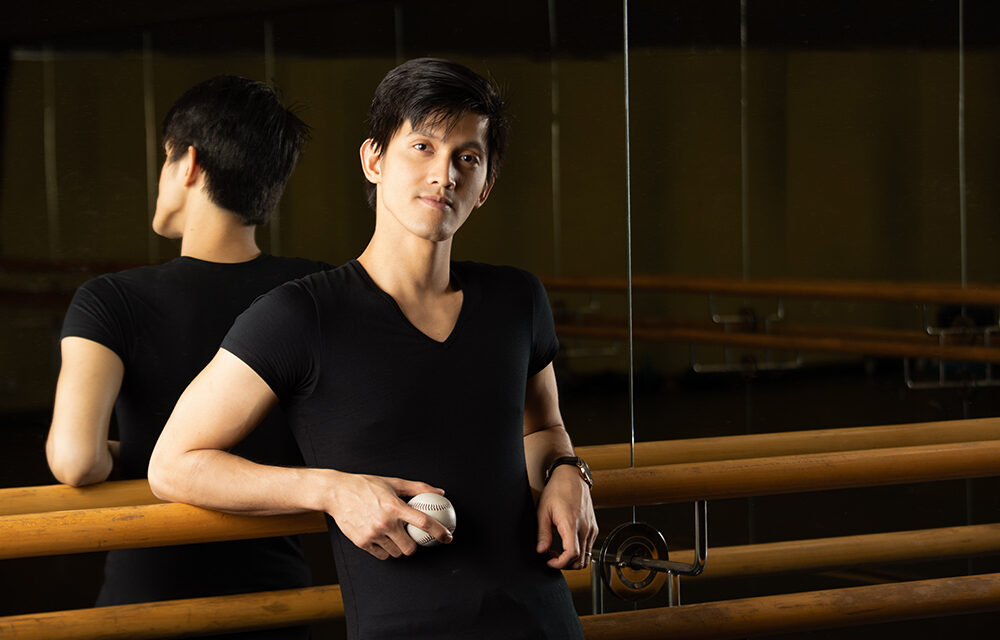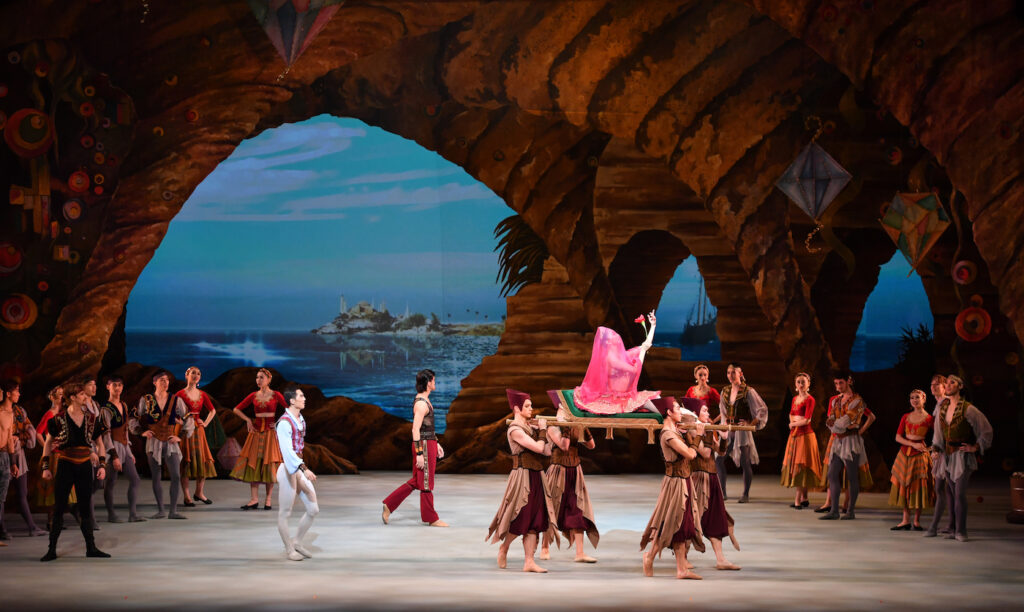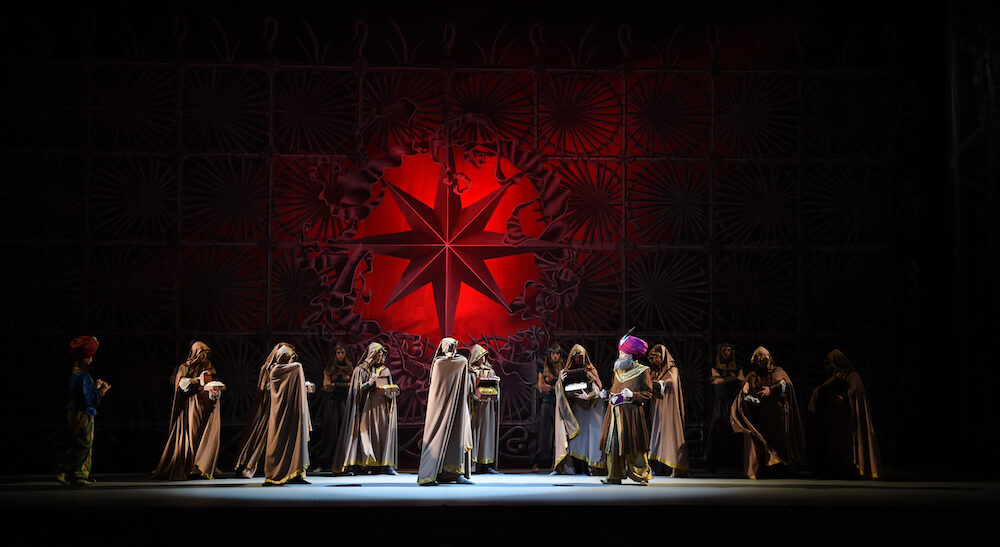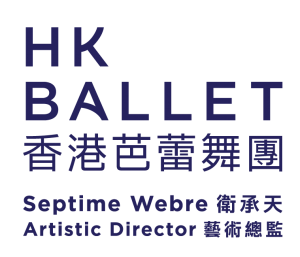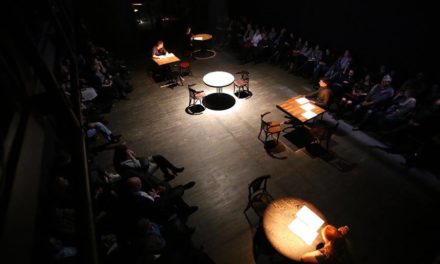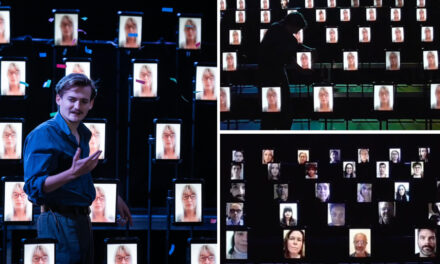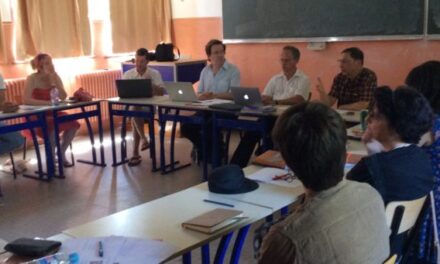This article is brought to you by The Hong Kong Ballet.
25-year-old Garry Corpuz is one of Hong Kong Ballet’s brightest young talents. In February, he played Tom Buchanan, one of the lead roles in its Asian premiere of Hong Kong Ballet artistic director Septime Weber’s The Great Gatsby, dancing alongside international dance stars Matthew Golding and Brooklyn Mack. Later this month, he dances the part of slave trader Lankendem in Le Corsaire, a revival of one of the company’s most successful shows in the last two years. It has been a rapid ascent for someone who only joined the company in 2017, straight from college in the Philippines – even more considering that Corpuz only started ballet as a teenager.
Raised in the countryside 150 kilometers north of Manila, Corpuz’s first exposure to dance was the Philippine folk dance he learned at school. He ended up flourishing in local dance competitions, no doubt helped by the fact that he is tall. At the age of 13, he decided to audition for the Philippine High School for the Arts, a government-backed school specializing in teaching artistically talented children.
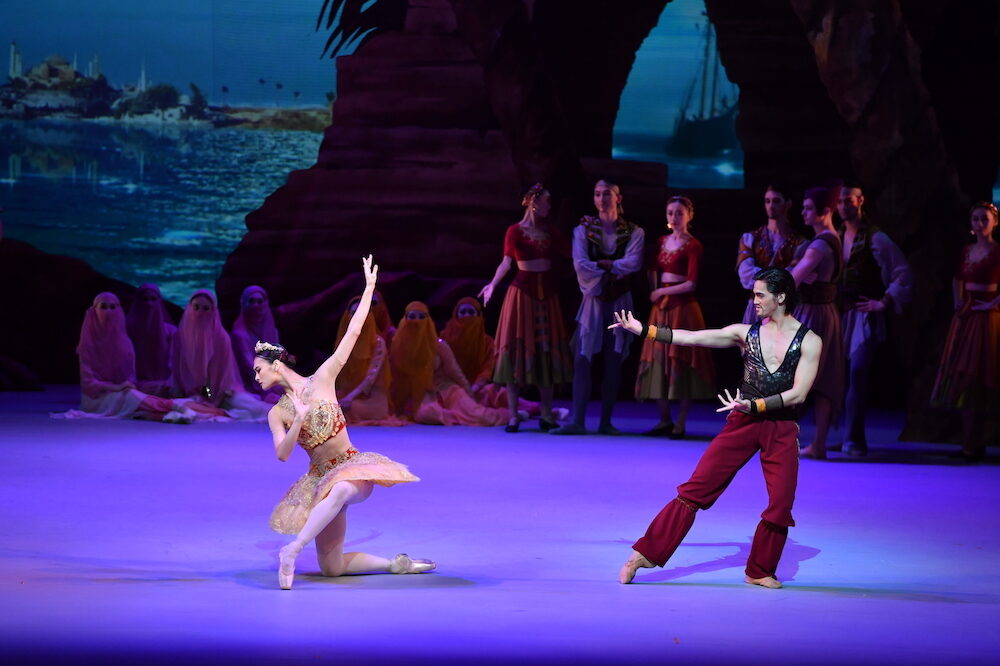
Wang Qingxin, Garry Corpuz and Hong Kong Ballet dancers – Photo by Conrad Dy-Liacco – Courtesy Hong Kong Ballet
On a whim, Corpuz decided also to apply for its ballet stream. “I was curious,” he says. “Before then, honestly, I had no idea about ballet.” With few other boys wanting to try, he was accepted for audition, got through the school’s two rounds of test and was offered a place. “Although I had never taken a class before, out of nowhere, I passed,” he says.
Awarded a full scholarship, he spent the next four years as one of the school’s tiny band of students – just 148 in total. After graduating, he spent another four years studying dance at Manila’s De La Salle-College of Saint Benilde, also on a full scholarship. The college’s dance course was affiliated with Philippines Ballet. By the time he was 17, he was dancing with the company as well as taking classes.
When Corpuz finished his degree in 2016, Luis Cabrera, a former fellow student from the High School for the Arts already dancing with Hong Kong Ballet, suggested that he try his luck in Hong Kong. Unable to attend the company’s annual auditions held in February, he flew in for three days of classes the following March. That was enough for the company’s then artistic director, Madeleine Onne. Four months later, he joined the company as a member of its Corps de Ballet.
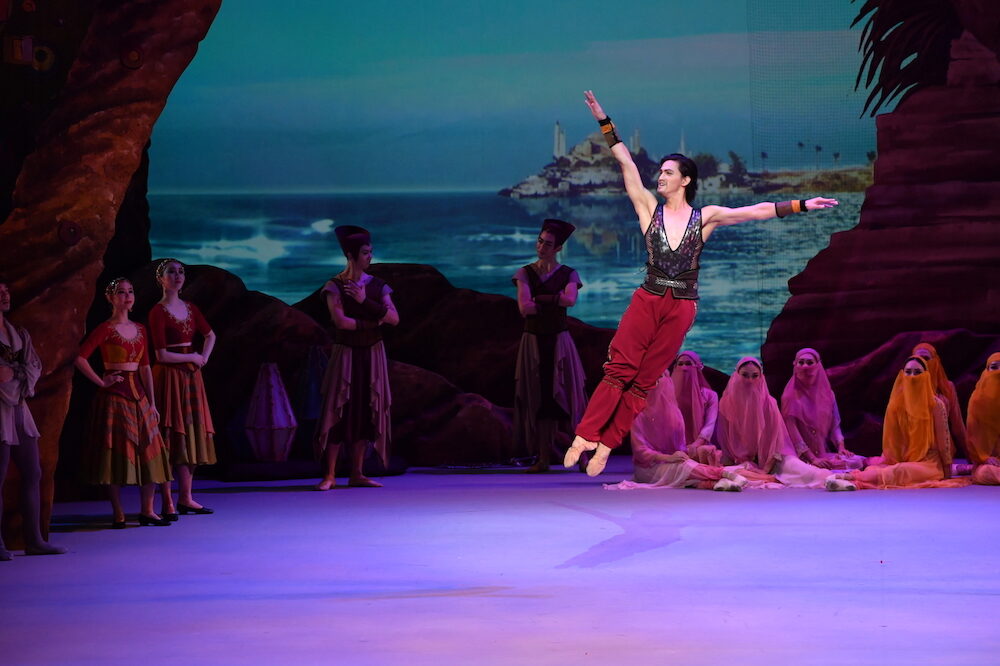
“When I’m on stage, I feel like I’m free” – Garry Corpuz in Le Corsaire – Photo by Conrad Dy-Liacco – Courtesy Hong Kong Ballet
The move to Hong Kong had its challenges. “In the Philippines, I was one of the tallest. Here, I felt small,” he says. “Everyone was the same height as me. Everyone was more flexible.”
The training was also more rigorous, but he adapted quickly. In 2018, one year after arriving, Corpuz was promoted to Coryphée, the first step up ballet’s hierarchy to become a soloist and then a principal dancer.
Now, from Monday to Friday, Corpuz starts his day with stretching and a class from 9:30 am to 10:45 am. After a short break, at 11 am, he switches to three hours of rehearsals through to 2 pm, a one-hour lunch break, then a further three hours of rehearsals through to 6 pm. He mainly spends his evenings at home.
“I’m not the kind of person who wants to go out and party. I’d rather stay at home, sleep, watch movies, play games,” he says. “Some dancers enjoying going out and partying every weekend, but not me.”
When Hong Kong Ballet is not performing, his Saturdays and Sundays are in theory his own. But with the company stepping its outreach activities, that is less and less the case. This month it has two pop-up events, the first on 17 March, Sunday in Central’s Statue Square, with a show for the domestic helpers who gather there on the day off, the second a week later at Tuen Mun’s Yan Oi Square ahead of the company’s five performances at Tuen Mun Town Hall.
With Hong Kong Ballet putting on nine productions a year, plus touring and breaks, the time to master new parts and shows is always short. “For The Great Gatsby, we started rehearsing in the first week of January,” says Corpuz. “That was a tight schedule, especially for a new ballet, with us needing to learn everything in six weeks.”
For new roles, the first priority is mastering the choreography. “We practice in order to make us feel comfortable with all the steps,” he says. “Only when we’ve built our stamina and our body is smooth and comfortable with the movements, do we add the character.”
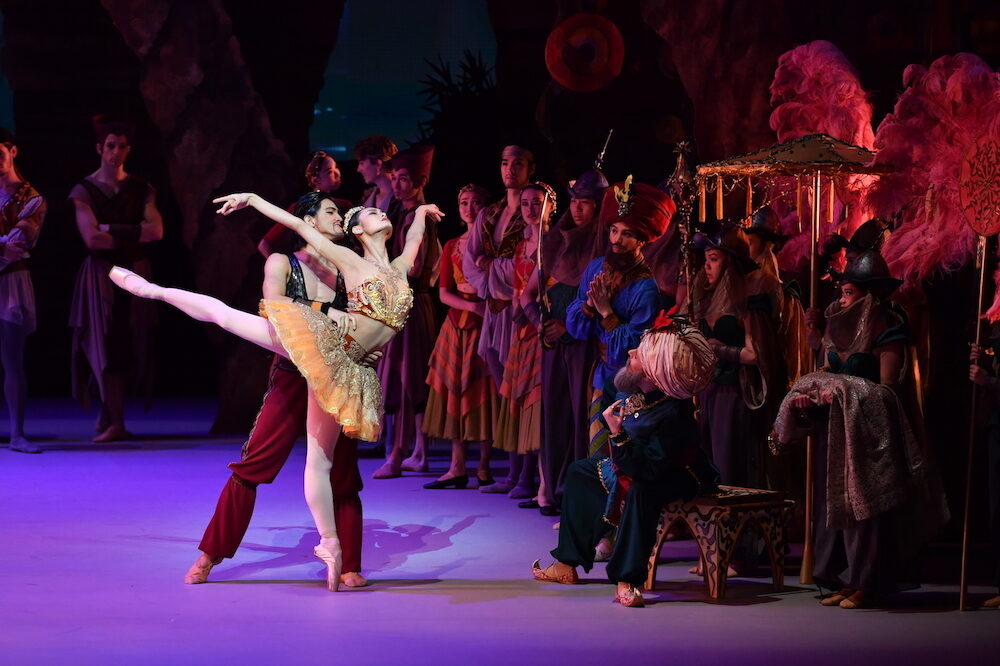
Garry Corpuz, Wang Qingxin and Hong Kong Ballet dancers – Photo by Conrad Dy-Liacco – Courtesy Hong Kong Ballet
Before a performance, Corpuz follows a set routine. An hour before the start, he puts on his makeup and warms up. Fifteen minutes before the start, he runs through some steps. Then, five minutes before the start, he prays. “I pray for the Lord to guide me, and for nothing bad like an injury to happen. I’m not the kind of person who goes to Mass, but I do think there’s a God who created us and guides and supports us,” he says.
His religion helps him at other times. “In rehearsals – sometimes I feel like I can’t finish something – I don’t have the energy. But before I sleep, I pray ‘Lord, give me the energy to do everything I need to do – take me away from danger. And then the next day I feel like I have the energy to do anything. It feels like magic.”
Watching ballet videos takes up much of Corpuz’s time. His idols are Mikhail Baryshnikov — “He’s a legend, one of my heroes” — and Cuba’s Carlos Acosta. Among today’s dancers, his favorites are Korean Kimin Kim, Ukrainian Leonid Sarafanov, and Russian Daniil Simkin. “There are a lot of technical dancers now,” he says. “They can do anything. They can turn, jump, do tricks. They have everything – beautiful feet, flexibility, good lines.”
But, says Corpuz, even more important are artistry and maturity, qualities which both take time to acquire. “They’re about the experience in your life – your normal life.” If a role needs emotion, it helps to have felt some sadness or heartbreak, he says. “If you’ve ever had a hard time, and you’ve felt the emotion that a role needs, then you can grab that feeling, pull it out and show it.”
Partners are another source of learning. “It’s how you connect to each other,” he says. “For each person, the body is different, the height is different, the way they move is different. The way they express themselves – the emotion – is different.”
It’s a situation that calls for continual adjustment. “Some partners are easy to dance with, others are hard. They have different personalities. There are things you can do with one partner that you can’t do with another. It’s like a game.”
Mood is another variable. “If she’s [feeling] lazy, for sure you need to work a lot. But if she’s on to it – if she wants to dance, to show off, her force, her movements will be strong, powerful.” The problem then is keeping control – not reacting with too much force.
Corpuz sees his career lasting another seven or eight, possibly ten years – into his early 30s, hopefully to 35. “If I still have a healthy body – no major injuries – I hope I can make it to principal.” Last September, Corpuz damaged a bone in one of his feet. He took a month off to recover, then returned slowly to dancing. “But there’s still pain, six months on,” he says. “If you’re injured – that’s hard. You want to push yourself to improve, to have better technique, a better quality [of dance], but if you have pain – that holds you back. It’s hard to dance with pain.”
And yet he presses on. “Rehearsing is so hard. And being a dancer means rehearsing every day,” he says. “There are times when you feel tired, your body is sore, it’s hard to move. You can feel when your partner’s not into it. Of course, every dancer has times when they are like that.”
The compensation is performance. “When I’m on stage, I feel like I’m free. I feel like I own the stage.” He pauses. “I don’t know if it comes out, but I’m enjoying it – every moment.”
Le Corsaire, Tuen Mun Town Hall, from 29 March 2019, Friday, to 31 March 2019, Sunday
Hong Kong Ballet Pop-Ups,
Statue Square, Central, 17 March 2019, Sunday
Free admission
Tuen Mun Yan Oi Square, 24 March 2019, Sunday
Free admission
Open Dance Class, Tuen Mun Town Hall, 31 March 2019, Sunday
Free admission
For further information, please visit hkballet.com.
This article was written by Simon Cartledge for Zolima CityMag on March 13, 2019, and has been reposted with permission.
This post was written by the author in their personal capacity.The opinions expressed in this article are the author’s own and do not reflect the view of The Theatre Times, their staff or collaborators.
This post was written by Zolima CityMag.
The views expressed here belong to the author and do not necessarily reflect our views and opinions.

